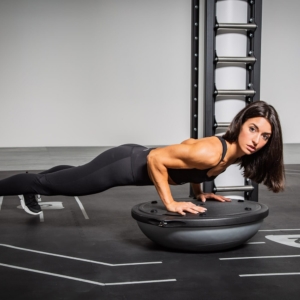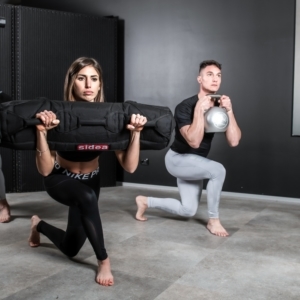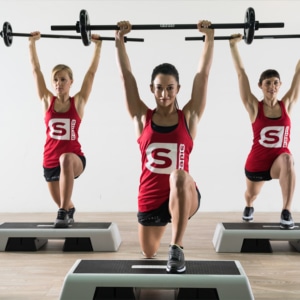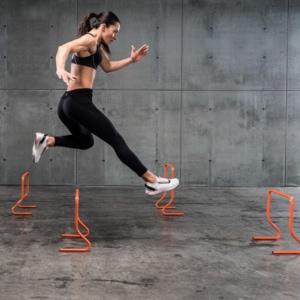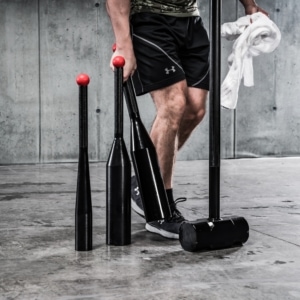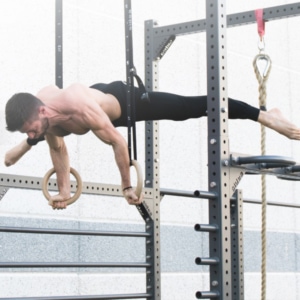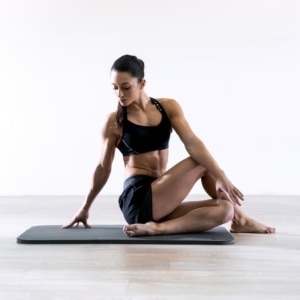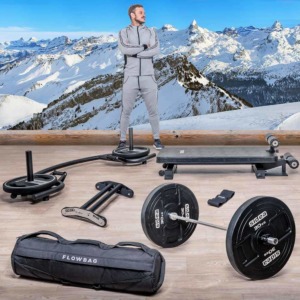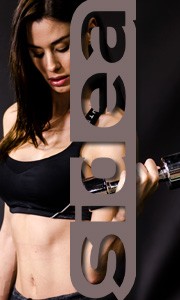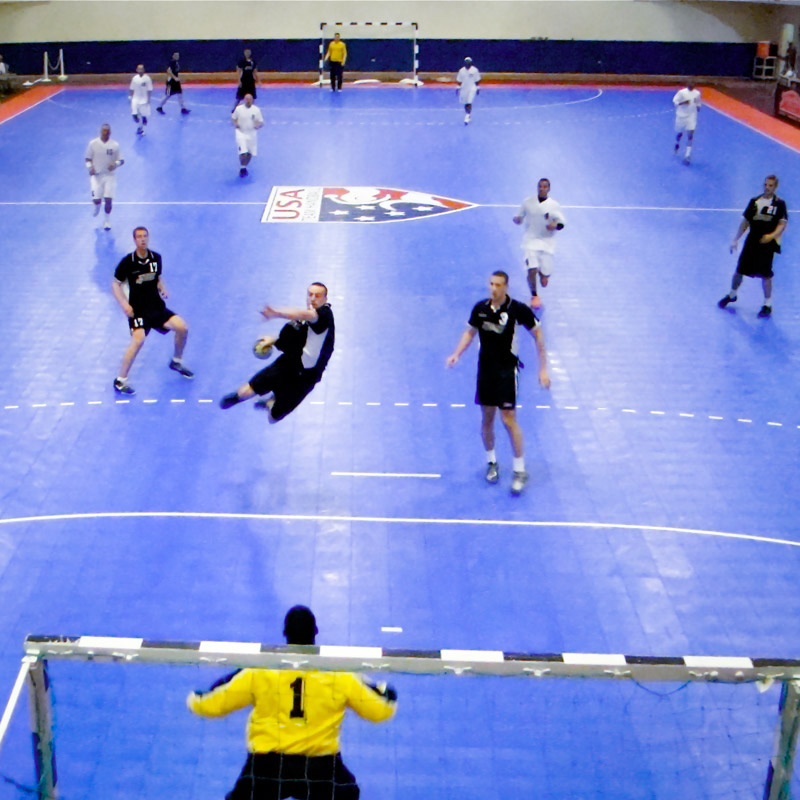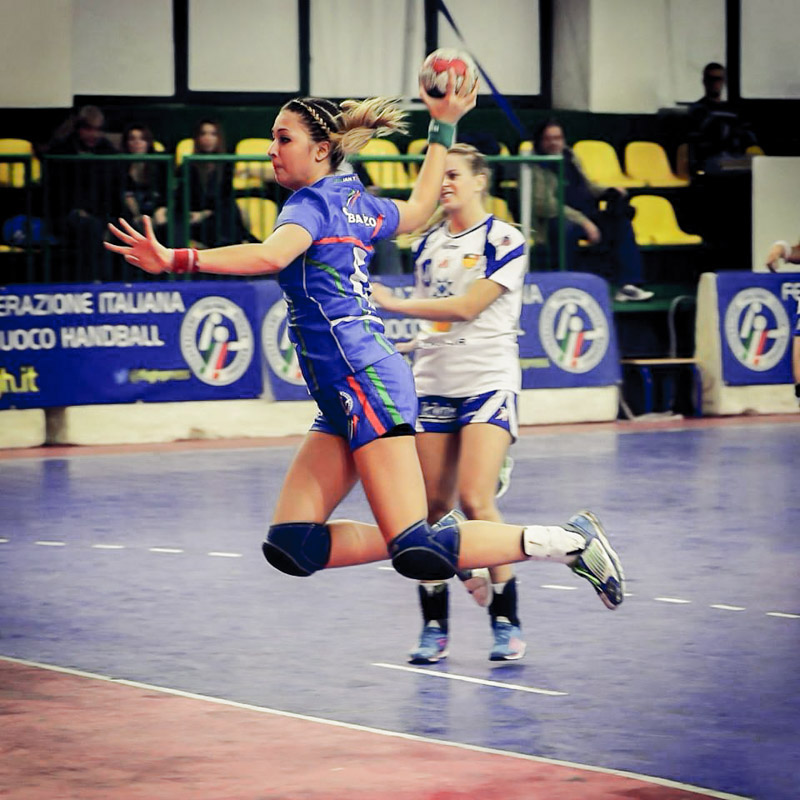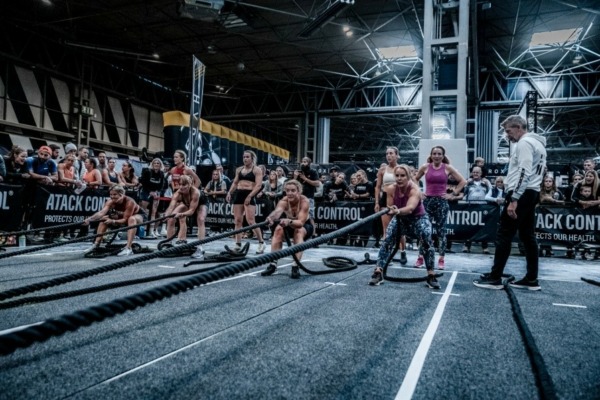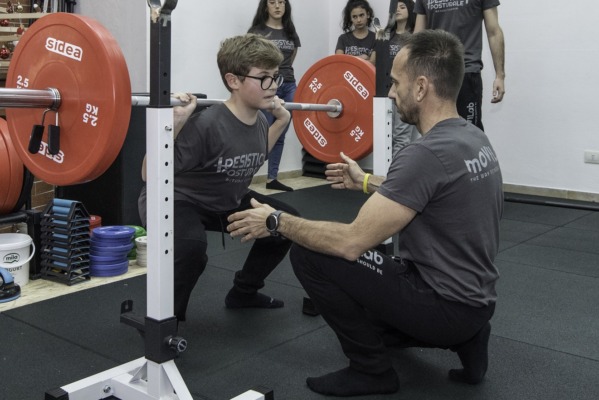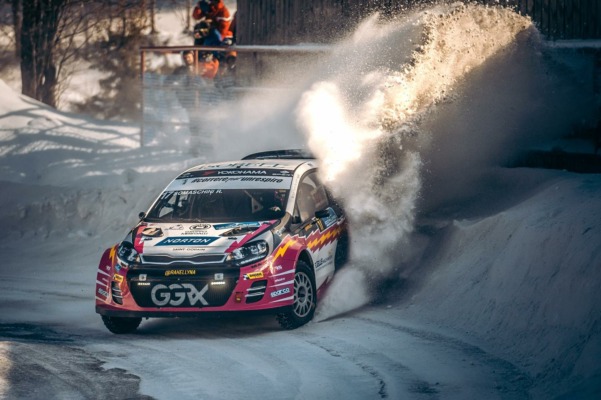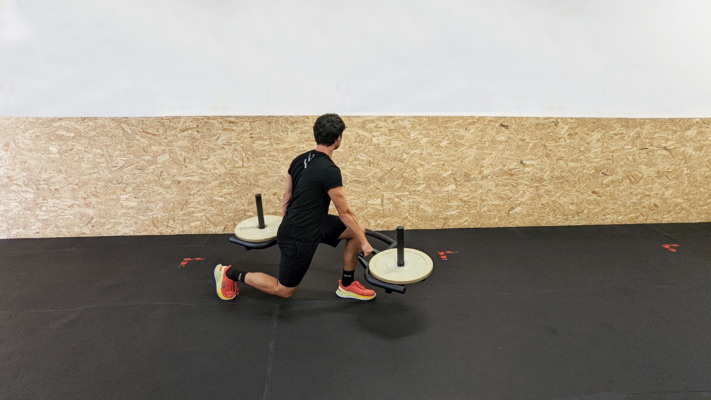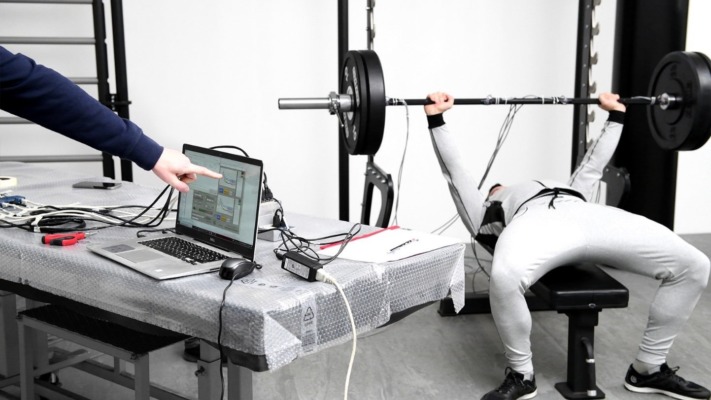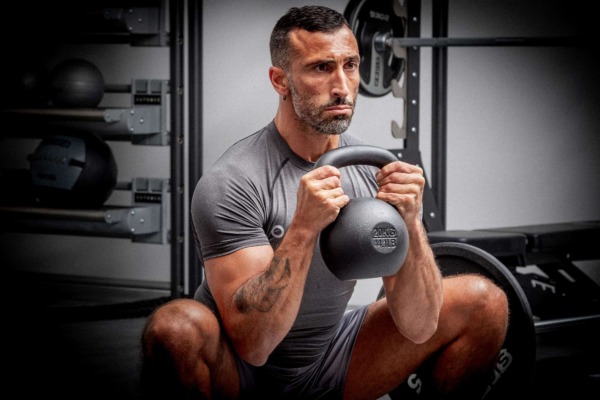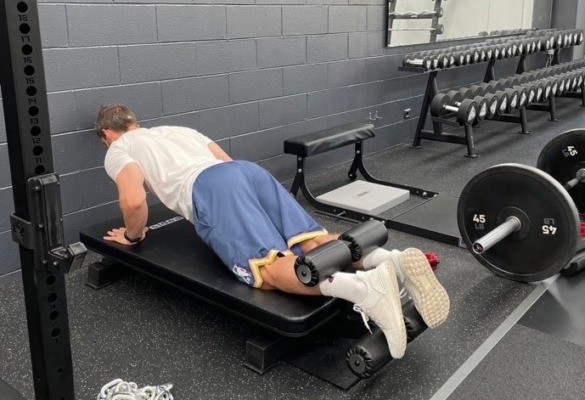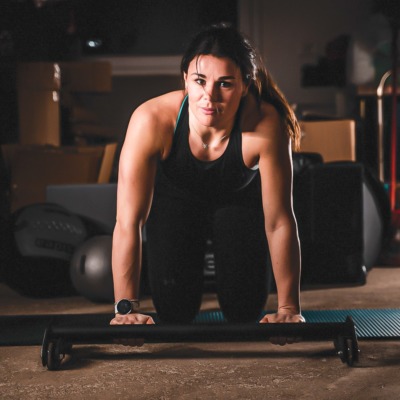🇮🇹 Leggi in Italiano
Practiced all over the world, Handball has gathered a wide following among sports enthusiasts. It has ancient origins (the Romans already practiced it under the name of harpastum) and it makes part of the Indoor category of team sports, among which it is the one with the largest field. Like all sports, handball needs specific athletic training, because it has characteristics that make it unique in its practice. Without an adequate technical and athletic preparation, the risks of injury would be high, as it is an activity with a high impact on both joints and muscles.
Characteristics of handball
Handball is played in 7 vs 7, in a field 40 meters long and 20 meters wide: the distance to be covered is not small and, even if the team is composed of 7 players, the energy expenditure is high. Because of these characteristics, we can say that, from a metabolic point of view, this activity can be considered very similar to basketball, with short and fast actions, jumps and sudden changes of direction. Handball is part of the sports with alternating aerobic-anaerobic activity, and for this reason the athletic preparation plays an absolutely important role, as it requires a good muscular performance in addition to the cardio-respiratory one.
Athletic preparation for handball: aerobic power and muscle strengthening
To better prepare for the practice of this sport we can consider two main parts of the athletic preparation, the part concerning the increase of aerobic power and the more specific part concerning muscle strengthening.
Aerobic power: what is it and how to train it
Aerobic power represents the maximum volume of oxygen that can be used by our body in a unit of time, during a maximal test; once reached the maximum limit, any increase in intensity does not cause an increase in oxygen intake.
“The aerobic mechanism is important to recover more quickly from oxygen debt after an activity” (Optimales Training, J. Weineck)
One of the most widely used methods to improve aerobic power is definitely Interval Training. This method consists of performing repeated sprints, shuttle runs or repeated game actions for about 15-20 seconds and with recoveries that can be equal to the working time (1:1) or even reduced by half (2:1).
In case you decide to work with not complete recoveries (2:1), this will help you to accustom your body to dispose of lactic acid and keep the oxygen debt constant. The choice of the distance to cover is always at the discretion of the athletic trainer, but my advice is to work on 25 meters at most, that can represent a quick break towards the goal or a quick coverage in case of defensive phase. Many trainers prefer to work on smaller areas, with 10-15 meters long shuttle runs. This method has a very strong impact on the muscles: braking and suddenly sprinting on the other direction requires a good muscle tone, as the muscle needs to contract in an eccentric way and release energy in an explosive way to be able to restart.
The work:rest ratio can be varied during the year depending on the period of the season. During the preparation period you can implement incomplete recoveries, while during the season, with the addition of matches every week, the recovery can be kept equal to the work time, in order to maintain that muscular “freshness” that all coaches need for their athletes. In any case, work times should never exceed 3-4 minutes of Interval Training. Between the different sets, the recovery must always be complete and the execution of low-intensity exercises such as joint mobility or stretching can help to dispose of the accumulation of fatigue.
SIDEA NEWSLETTER
Sign up with your email address to receive news, events and focus articles about Sidea and OUTRACE
Muscle strengthening
As for muscle strengthening, it can be obtained both through exercises in the gym or in the field, and it should be functional to the muscular demands of the specific activity. Jumps, changes of direction, throws and twists are the movements that occur in each action.
In the off-season you could give more importance to the volume, increasing the number of sets and repetitions to learn the technique and tone the muscles, while during the rest of the year the choice should fall on the intensity: a few repetitions but with a high load (75-80% 1RM) to go for maximum explosiveness. Many coaches decide to train this aspect through the same Interval Training method: small circuits of 5-6 exercises in which athletes take turns performing these movements for 20-30 seconds and change exercise each time. My advice is to include both exercises with overloads and movements performed directly on the field such as sprints, restarts or jumps. There is not a specific exercise that I would recommend, but it is important that all the abilities required by this sport are involved.
Prevention
In addition to the development and implementation of these two main parts we have analyzed, prevention is the basis for improving and maintaining our sports performance. Performing mobility exercises before and after training will help you maintain a correct posture, without incurring in muscle imbalance or overload.
The large number of passes, throws and shots on goal place a lot of stress on your shoulder and on your torso, as they are most of the time twisting movements. Core stability, mobility and stretching should be a constant in your workouts, as they prepare your body for the stresses that you will face during sports practice.
Before each workout, always remember to perform 5-10 minutes of shoulder-specific warm-ups with elastic bands, weights or equipment that adds instability, such as the Flow Bag. This joint can very easily incur injuries, because as in volleyball it is stressed throughout the match. Indeed, throws performed at maximum power eccentrically stress all the stabilizing muscles of the shoulder.
Handball training examples:
Off-season:
- Warm-up (mobility – core stability – prevention): 10 minutes
- Training with weights, functional circuits: 20 minutes
- Training for the development of aerobic power: 4 sets of 4 minutes of intermittent work with recovery of 2-3 minutes (25/30 minutes)
- Technical part: 25 minutes
- Cool-down: 10 minutes
On-season:
- Warm-up (mobility – core stability – prevention): 10 minutes
- Weight training (1/2 times per week): 15/20 minutes
- Training on the field for specific aerobic power development or with technical exercises: 20 minutes
- Technical part: 20 minutes
- Cool-down: 10 minutes
- Professional athletic trainer and high-intensity training specialist.
- Physical trainer for Cesena Calcio football club for three seasons (2015-16, 2016-17, 2017-18) as strength and conditional coach.
- Fitness consultant as regards training scheduling and the evaluation of the functional training activities, athletic preparation and online coaching.


